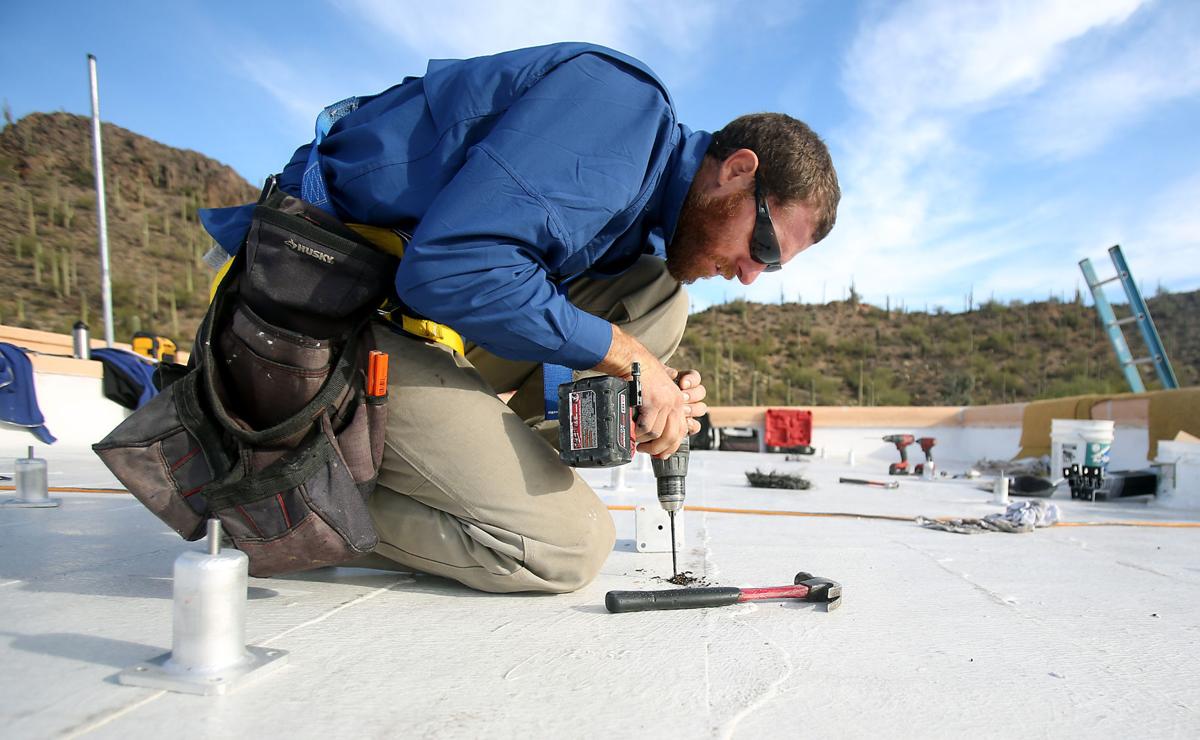After years of debate, Arizona utility regulators finally appear ready to decide a long-burning question: What is solar energy generated on customers’ rooftops really worth?
The Arizona Corporation Commission is expected to decide the issue on Dec. 19, when it will consider proposals to change rates for rooftop solar customers including controversial cuts to credits solar customers get for the excess power they generate.
And that could have a major impact on the cost and adoption of rooftop solar in territories of state-regulated utilities including Tucson Electric Power Co. and the biggest state-regulated utility, Arizona Public Service Co.
Under the process, known as net metering, solar customers are credited monthly at the full retail rate for excess power — for TEP about 11.5 cents per kilowatt-hour. Any credits left at the end of the billing year are credited at each utility’s comparable cost for wholesale power, for TEP about 2.5 cents per kwh.
While solar companies and advocates want to keep the full retail credit rate, TEP has proposed cutting the net-metering credit rate from the retail rate to the cost of power from its most recent utility-scale solar farm, about 6 cents per kilowatt-hour, reasoning it is a similar resource.
APS has proposed a rate not much more than the avoided cost of fueling conventional power plants, about 3 cents per kwh.
In a ruling in late October, a Corporation Commission administrative law judge said regulators should scrap the current system of reimbursing customers with rooftop solar at the full retail rate for power.
For the near future, Judge Teena Jibilian said, new credit rates for solar customers should be based on short-term studies based on costs avoided by rooftop solar, or on the cost of power from large, utility-scale solar farms.
The cost studies would be based on a rolling five-year examination of the benefits and costs of rooftop solar, potentially eliminating from consideration long-term benefits including reduced pollution and public-health costs.
That riled solar advocates, who insist long-term societal benefits of solar including lessening the need for new fossil-fuel power plants and reduction of health risks should be fully counted.
The judge’s recommendation, will form the basis for the Dec. 19 hearing, but the full Corporation Commission has final say and can reject or modify the proposal.
For its part, TEP agrees with most of the judge’s decision but has sought clarification on several issues, company spokesman Joe Barrios said.
The company wants it made clear that “banking” of solar energy credits — allowing one month’s excess production to be credited toward the next month — would end under the new rules.
In commission filings, TEP said it prefers the solar-farm cost proxy for setting solar export rates over the avoided-cost methodology, but that the commission should clarify that utilities could use either.
Chilling effect
Any cuts to net-metering rates would reduce the advantages of solar and extend the financial payback period for such systems by years.
In fact, the prospect of fewer solar benefits has caused many customers to balk at installing their own panels, especially since the utilities have been telling customers changes are on the way.
Kevin Koch, owner of the local solar installation firm Technicians for Sustainability, said his business has been down since TEP filed to change net-metering policy effective June 1, 2015.
The matter was put off along with other utilities’ net-metering change requests, to await the outcome of the value-of-solar proceeding, but TEP’s notices that net-metering rates could change chilled the market, Koch said.
“That created a tremendous amount of uncertainty in the marketplace,” he said.
TEP didn’t see much of a drop off overall, however.
This year through November, TEP counted 3,019 rooftop solar installations tied to its grid, compared with 3,199 in all of 2015, and 1,937 in 2014.
The uncertainty isn’t limited to TEP.
William Rood was interested in installing solar on his SaddleBrooke home when he found that his power company, Trico Electric Cooperative, was proposing changes including new demand charges and lower net-metering rates for rooftop solar customers.
With Trico’s help he calculated that the proposed new credit rate of 7.7 cents per kwh would extend his payback period more than two years. Still, Rood decided it was worth it.
In October he spent about $20,000 to install a 6.36-kilowatt photovoltaic system that offsets most of his power usage.
“I decided to go ahead with it because it was the right thing to do,” said Rood, a retired newspaper reporter and editor.
Rood may have avoided the new rates after all.
In a pending rate settlement with the Corporation Commission’s utilities staff, the Trico net-metering changes would apply to customers who applied to install their systems after May 31. All prior customers would be grandfathered under the old rate system.
But in a recommended order issued last week, a Corporation Commission administrative law judge recommended that the new rules should apply to Trico customers who apply to install solar after the effective date of the new rates, likely early next year.
The judge in the value of solar case also has recommended that all solar customers be grandfathered under current retail credit rates until each utilities’ new rates are approved.
Though the matter isn’t settled, Rood said he’s glad regulators are rejecting the idea of retroactive changes.
“The grandfathering thing, I think, is just patently unfair,” he said.





